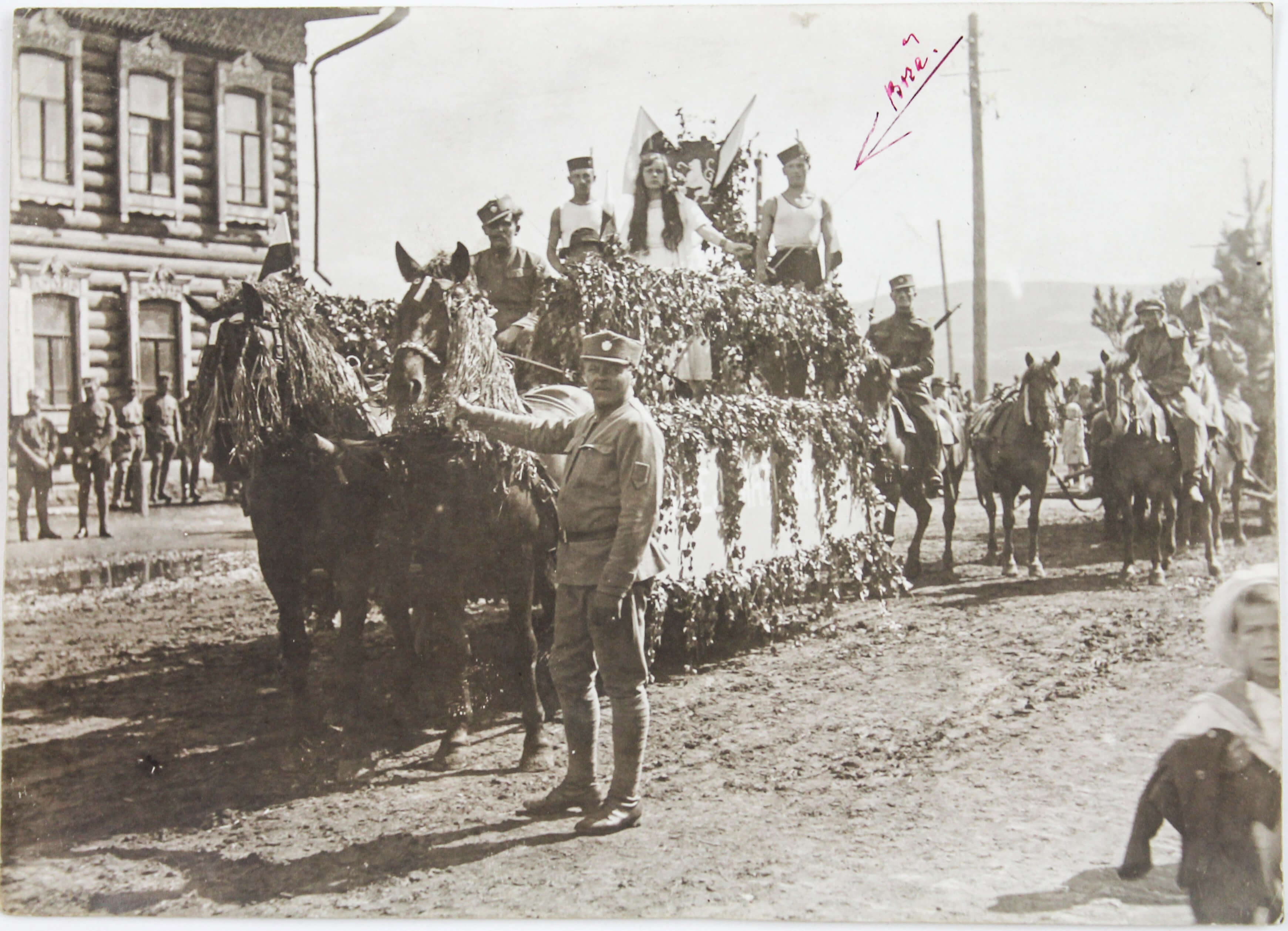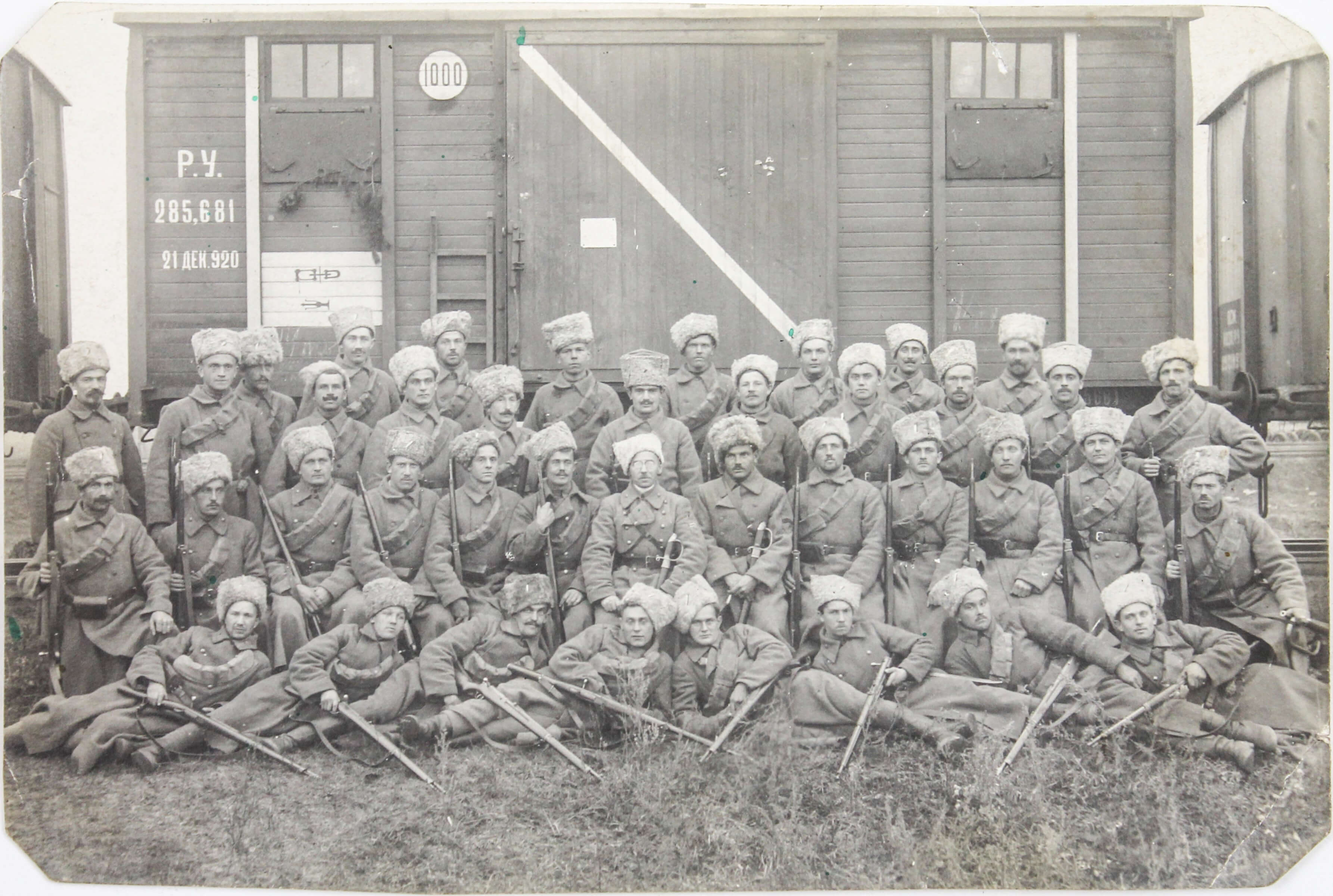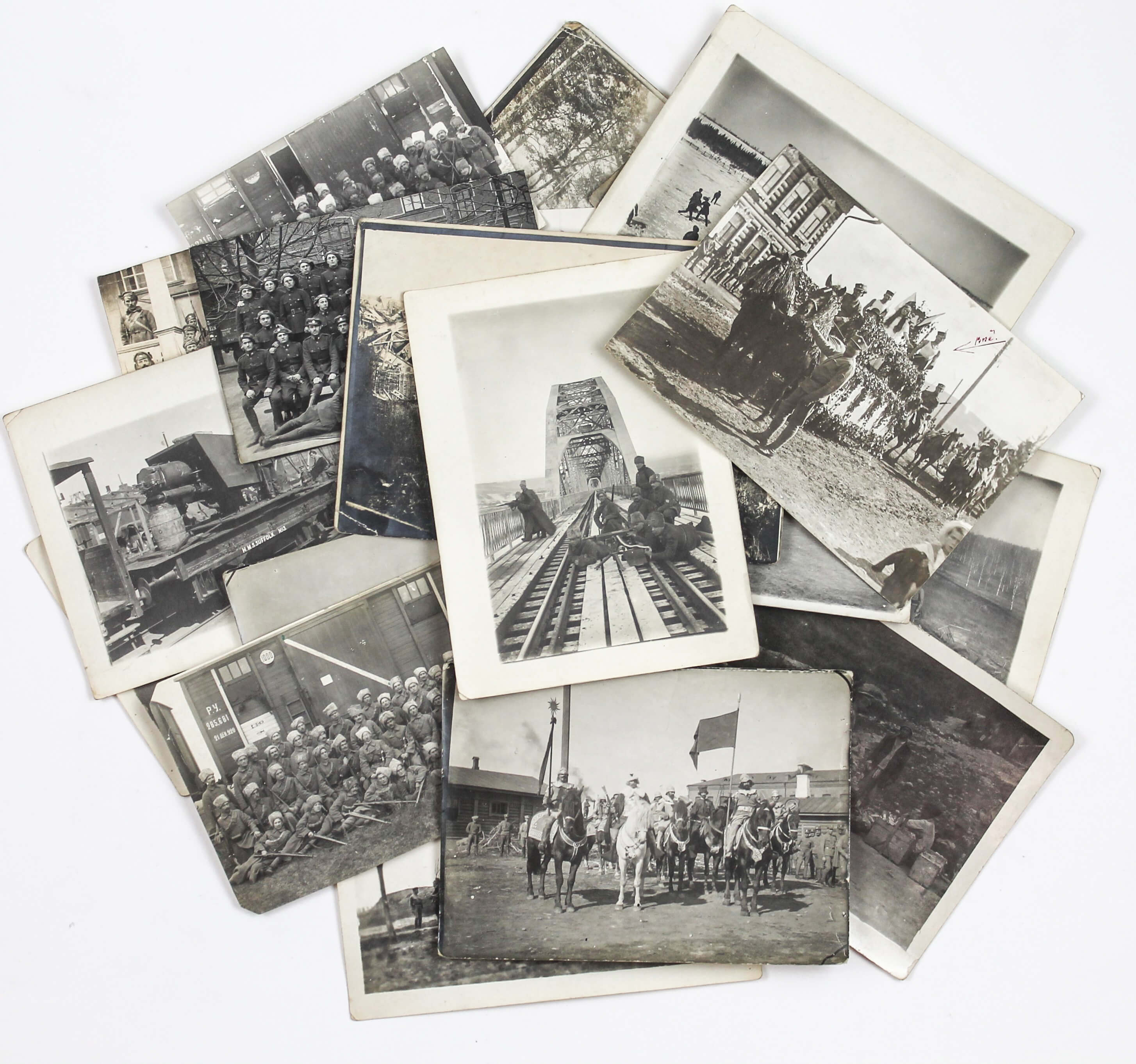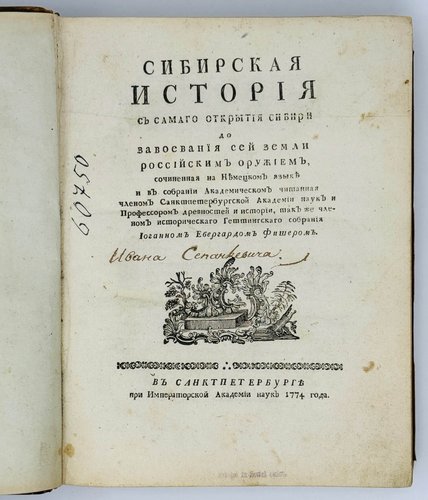









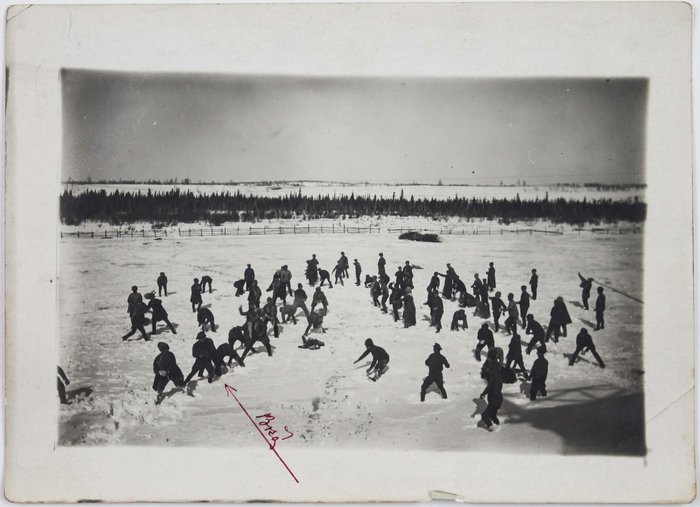

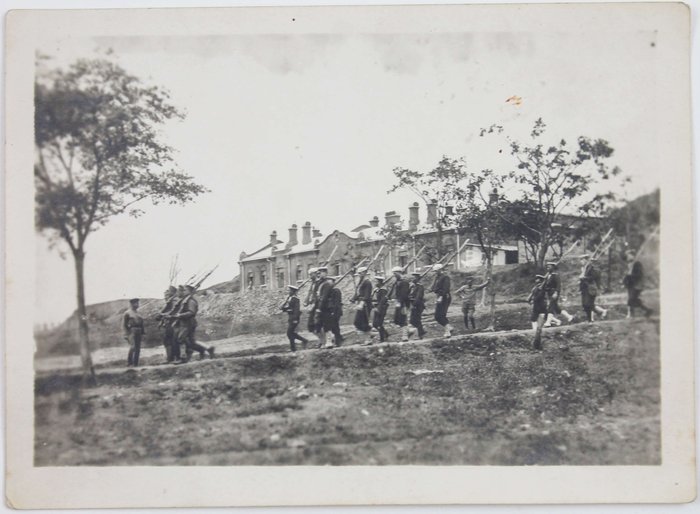




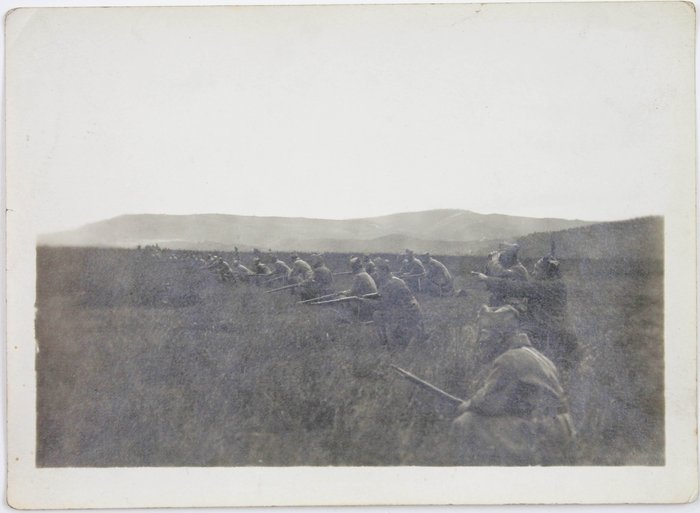


#PD24
Ca. 1917-1929
Eighteen loose original gelatin silver photographs, including two large photos ca. 12,9x17,7 cm (5 x 7 in), smaller ones from 10,8x15,9 cm (4 ¼ x 6 ¼ in) to 8,3x12,8 cm (3 ¼ x 5 in), and the rest of the photos ca. 12x16,5 cm (4 ¾ x 6 ½ in); fifteen photos with period pencil/ink inscriptions on verso (in Czech or English & Czech), including thirteen photos with dates indicated; one photo numbered in negative; two photos with the photographer’s ink captions on the front side (“Borá”); with two real photo postcards ca. 13,8x8,8 cm (3 ½ x 5 ½ in), one postcard with the photographer’s ink caption on the front side (Ucha!). One photo lacks a small fragment in the lower margin, several photos with worn edges and mild soiling, but overall a very good collection of strong, interesting photos.
Historically significant collection of eighteen original photographs and two real photo postcards documenting the revolt of the Czechoslovak Legion during the Russian Civil War. The photographs were apparently taken by an amateur photographer and a soldier of the Czechoslovak Legion in the 1910s and the 1920s. Only five identical photographs from our collection were found in the digital photo archive of the “Legie 100” project of the Ministry of Defense of the Czech Republic.
The Czechoslovak Legion, brokered by Czech and Slovak independence leaders, was formed by the Russian military during WWI to fight Austria-Hungary. After the October Revolution, the Legion became entangled in the Russian Civil War and Allied anti-Bolshevik schemes. The Legion took control of the Trans-Siberian Railroad and aligned with the White Armies. After two years of battling through Siberia, the Legion signed a truce with the Bolsheviks, gaining safe passage to Vladivostok, where it was evacuated on Allied ships.
The collection features eighteen original gelatin silver photographs of the Czechoslovak Legion taken in the Russian Far East and Siberia in the 1910s-1920s.
The earliest photo shows the 9th Company of the 1st Czechoslovak Regiment in 1917, as the Legion contemplated a revolt against the Bolsheviks. The image captures over fifty soldiers in military uniforms (long coats, caps, and cross-straps) holding rifles and posing for the camera. There are also five well-executed close-up group photos of the 1st and 2nd Companies of the Czech Shooting Regiment marching, orchestrating, and training on horseback or foot.
Seven captioned photos from the collection document the Legion’s operations on the Siberian Front, showing the 1st Company of Czech Shooting Regiment No 10 cheerfully play-fighting in the snow, field exercising, etc. An interesting photo, dated 1918, captures European militaries posing on the combined British Royal Marine armored train “H.M.S. Suffolk #3.” The train under Capt. John Bath, R.M.L.I. and Cdr. James Wolfe-Murray, RN, saw action in the Ussuri District of Siberia in August 1918. Another important photograph taken in Yekaterinburg shows militaries posing at the site of a train collision (“O.S.M. Bryansk”), with some soldiers standing atop the wreckage.
The rest of the Siberian photographs capture Krasnoyarsk. One excellent, lively scene from 1918 depicts a group of armed soldiers and snipers defending the Krasnoyarsk Bridge (1899-2007) from the Bolsheviks. The bridge carried a section of the Trans-Siberian Railway across the Yenisei River and was strategically important to both the Soviet and opposing forces. Two other photos from 1919 capture a festive procession of Czech soldiers “on Sokol Vagon,” and Hussites in costumes waving flags and celebrating the overthrow of Soviet power in Krasnoyarsk.
Other interesting photos show foreign soldiers patrolling in Vladivostok (1918), Czech soldiers buying food from Chinese merchants in Manchuria, and the Ononsky Bridge destroyed by the Bolsheviks in Manchuria in 1918. Particularly significant is a photograph of Czech soldiers posing by the U.S.A.T. Edellyn as they eagerly await evacuation from Vladivostok in 1920.
The collection also includes two real photo postcards: one showing a couple of soldiers (including one “Ucha!” as captioned by the compiler) posing in a studio setting, and another featuring a group of Czech militaries posing for an official photograph in Rasovich in 1929 (after the establishment of the first independent Czechoslovak State). Overall, historically important collection of eighteen original gelatin silver photographs and two real photo postcards documenting the Czechoslovakian Legion’s revolt against the Bolsheviks.




